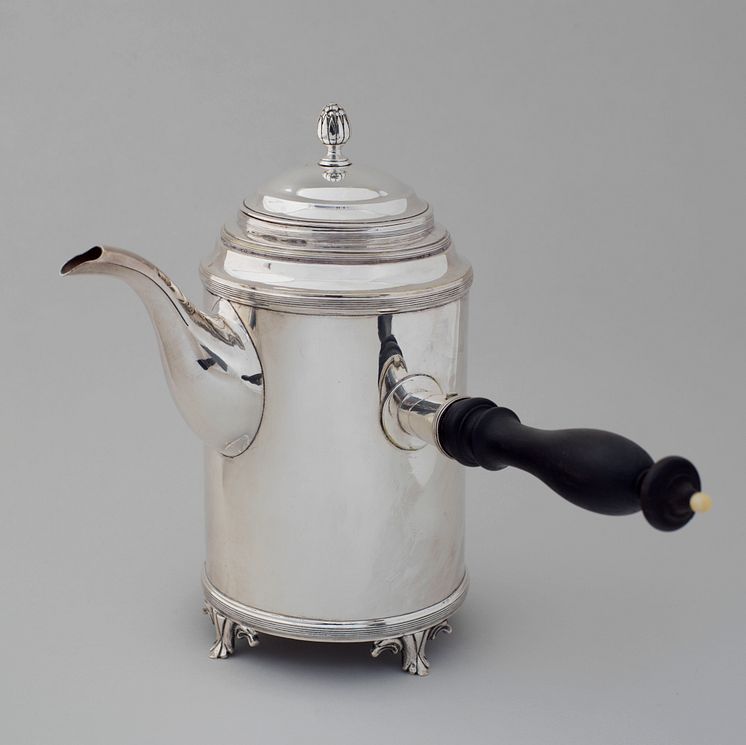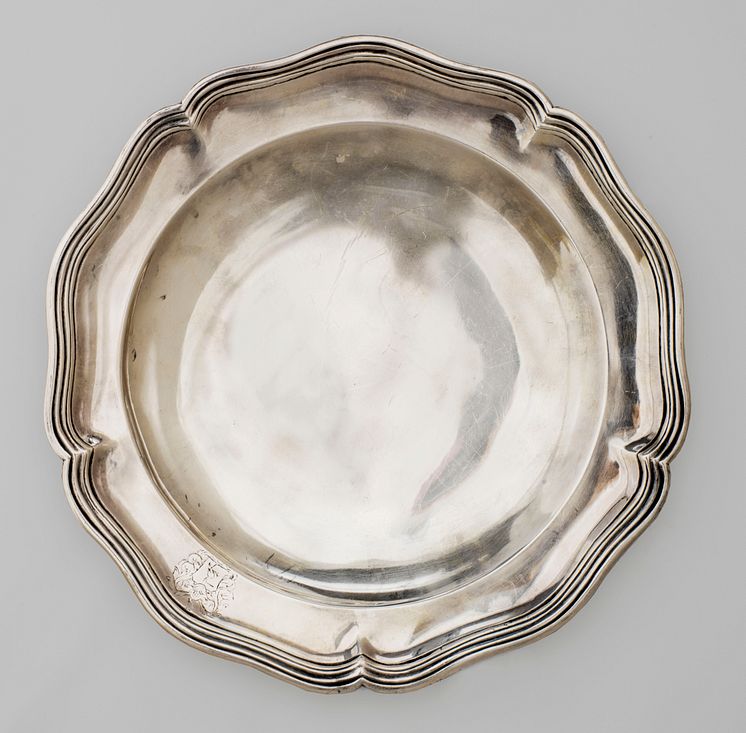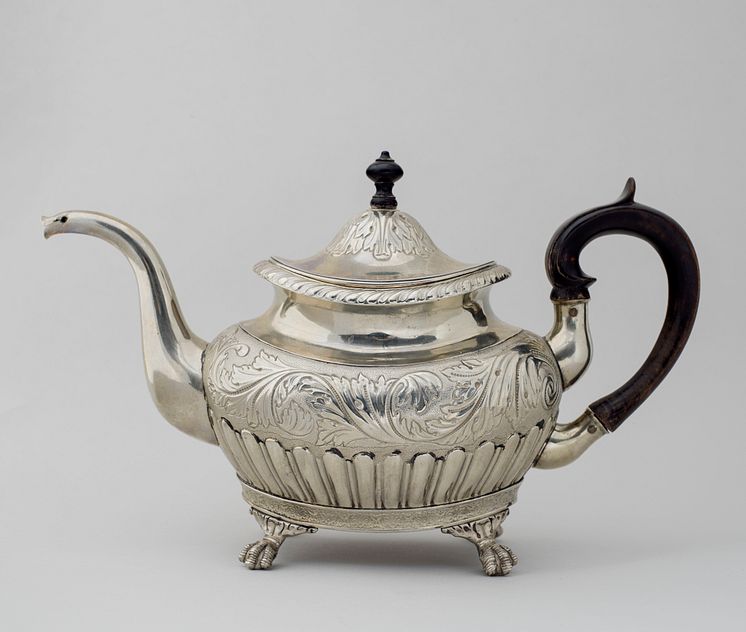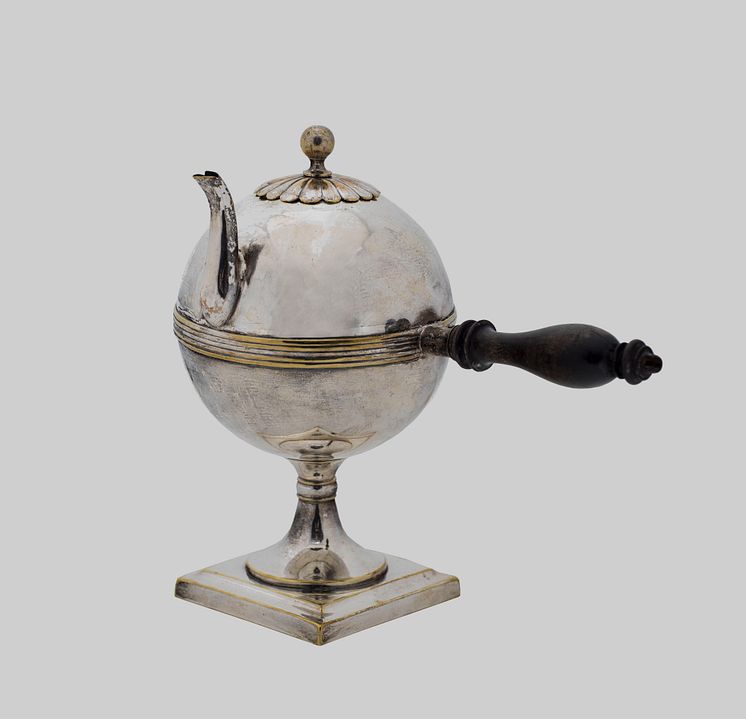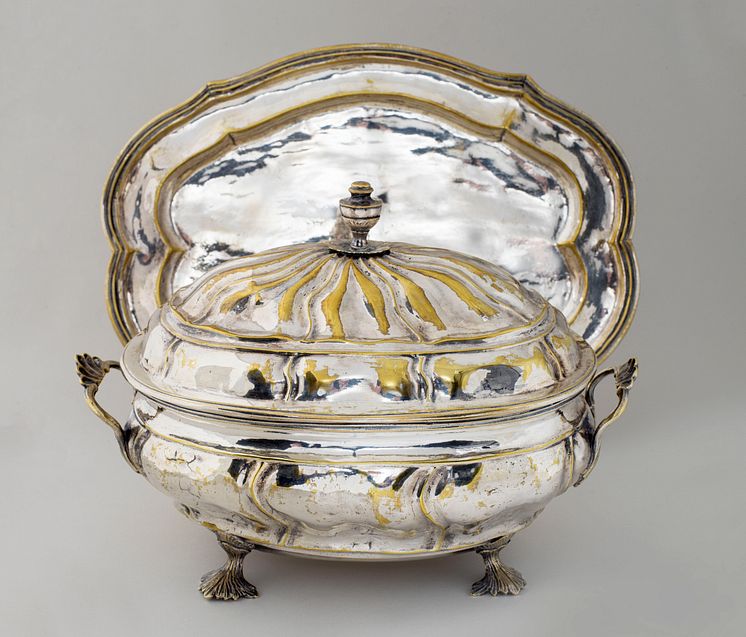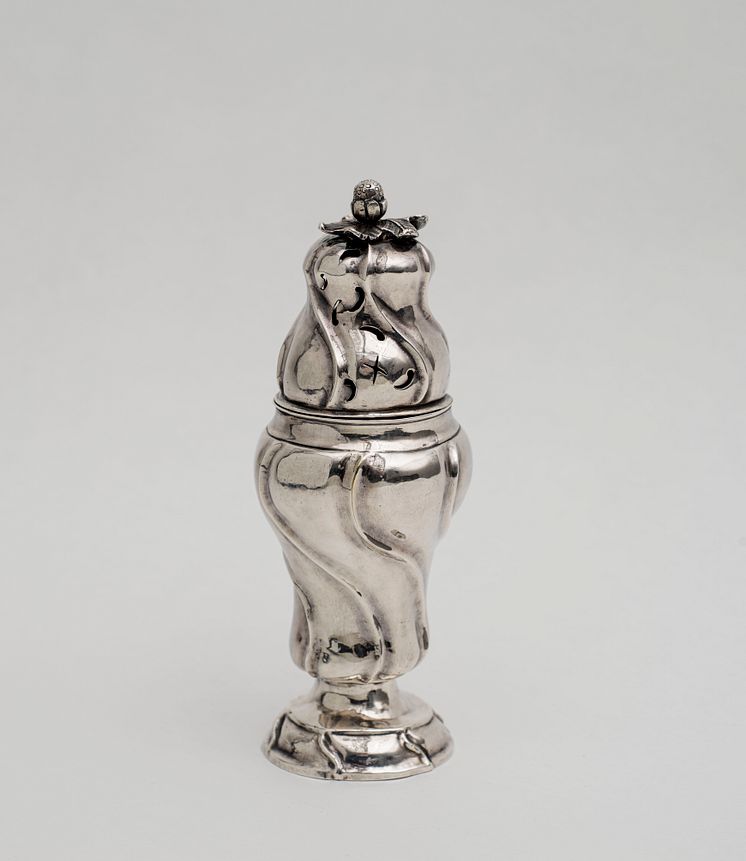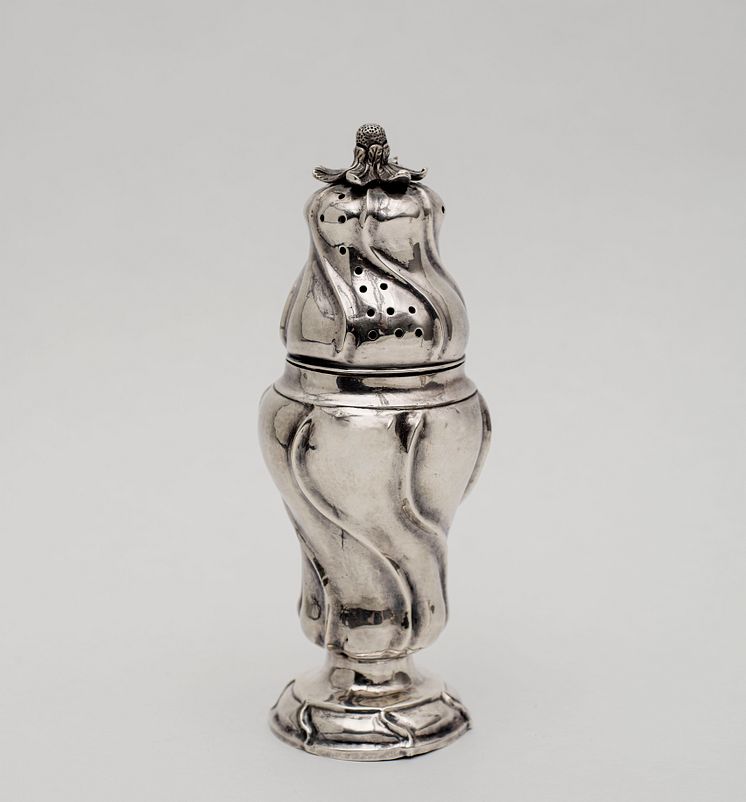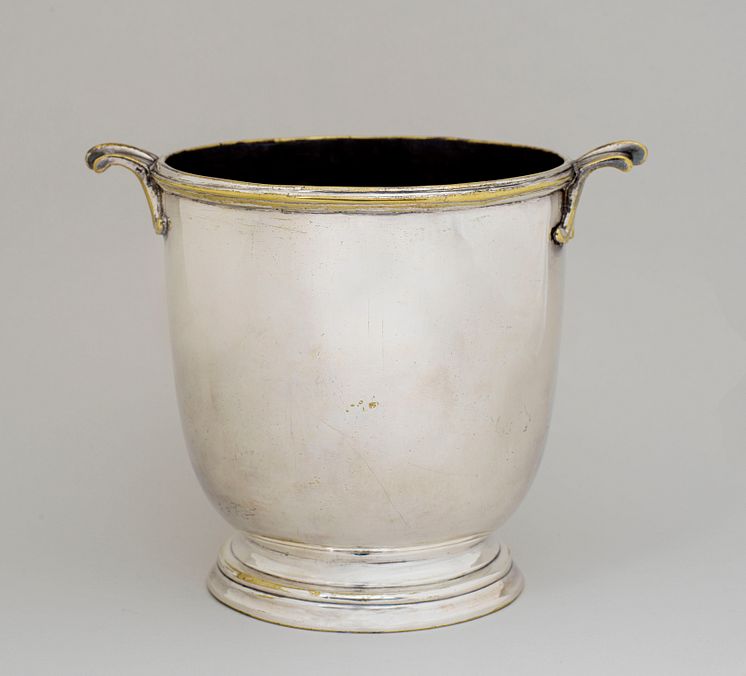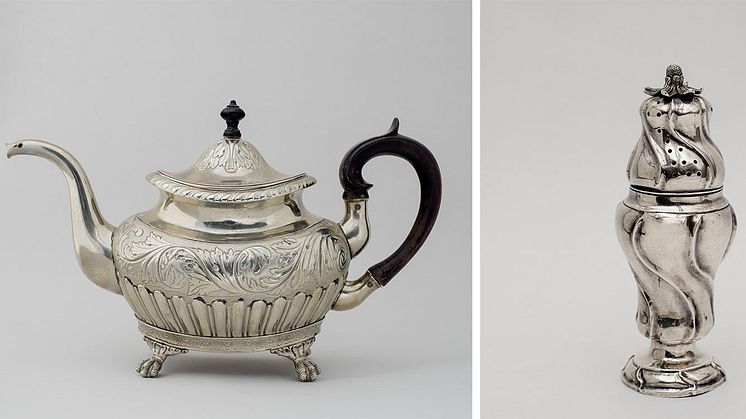
Press release -
Rare Objects in Argent Haché acquired by Nationalmuseum
Nationalmuseum has recently acquired a number of rare objects made of silver plated brass, known as argent haché, from the late 18th century. Few of these objects have survived to the present day, and the museum’s collections had thus previously lacked examples of this important part of Swedish design history. Several of the objects are from the unique collection of the antiques dealer Lars-Yngve Johansson.
Objects of silver plated brass, known as argent haché, were manufactured only in the late 18th century. Few objects of this type have survived to the present day, and those produced in Sweden are of particular interest for Nationalmuseum. The antique dealer and TV personality Lars-Yngve Johansson possessed extensive knowledge of argent haché, as well as a unique collection of such objects. After his death, many of these items were auctioned off in the spring of 2019, and the museum was able to enrich its collections with objects from his collection.
“Through the sale of Lars-Yngve Johansson's collection, it was possible to acquire a whole group of unique Swedish objects in argent haché. The collectibles and great knowledge of a connoisseur can thus be made available to a larger public,” says Micael Ernstell, Curator of Applied Art and Design at Nationalmuseum.
Lars-Yngve Johansson's knowledge lives on through the book Argent haché. Lars Yngve Johanssons samling av försilvrad mässing (Argent Haché. Lars Yngve Johansson's Collection of Silver Plated Brass), published by Bukowski’s Antonia and Carl Barkman in connection with the auction. The publication is an important contribution to knowledge on the subject. Above all, it clarifies the history of argent hachéproduction in Sweden, with information about masters, stamps, etc.
Among the acquired items is a tureen with lid and plate made by Caspar Liendenberg in Stockholm in 1768. One of the stamps makes it clear that it is made of argent haché. Another Stockholm-based master was Eric Nyström, active from 1783 to 1814, who created the baluster-shaped sugar sprinklers that have now been acquired. Two unstamped items were acquired because of their Swedish connection. The plate bears the coat of arms of the Grill family and was probably produced in Sweden. The wine cooler is almost certainly of foreign provenance, but bears the initials of Charles de Geer. Another item of interest is the teapot by Erik Nordgren, who worked in Jönköping from 1817 to 1847. The teapot is made of nickel silver, which despite its name does not contain silver but rather a copper alloy composed with nickel and often zinc, which was used to imitate sterling silver.
Another acquisition is a coffee pot adorned with a straight shaft of blackened wood and the angular form of which is typical of the period. It is unstamped, but has an unequivocally Swedish shape and was bequeathed to the museum by the cultural historian Åke Livstedt.
Nationalmuseum receives no state funds with which to acquire design, applied art and artwork; instead the collections are enriched through donations and gifts from private foundations and trusts. The acquisition of the silver plated brass objects has been made possible by a gift from the cultural historian Åke Livstedt, and seven other objects were purchased using donations from the Axel Hirsch Foundation.
Inventory number:
Unknown artist, Coffee pot, 1700–1800. Silver plated brass, blackened wood, bone. NMK 78/2019
Unknown artist, Plate, 1760–1800. Silver plated brass. NMK 83/2019
Erik Nordgren, Teapot, 1817–1847. Nickel silver and blackened wood. NMK 84/2019
Unknown, Teapot, 1800–1820. Silver plated brass and blackened wood. NMK 85/2019
Caspar Liendenberg, Tureen with lid and plate, 1768. Silver plated brass. NMK 86/2019
Eric Nyström, Sugar sprinkler, 1780–1790. Silver plated brass. NMK 87–88/2019
Unknown, Wine cooler, 1750–1800. Silver plated brass. NMK 89/2019
For further information:
Micael Ernstell, Curator of Applied Art and Design, micael.ernstell@nationalmuseum.se, +46 (0)8 5195 4392
Hanna Tottmar, Head of Press, press@nationalmuseum.se, +46 (0)8 5195 4400
Categories
Nationalmuseum is Sweden’s museum of art and design. The collections comprise older paintings, sculpture, drawings and graphic art, and applied art and design up to the present day. The museum building has currently been renovated and reopened in autumn 2018. Nationalmuseum has partnerships with Svenska Dagbladet, Bank of America Merrill Lynch, The Wineagency and the Grand Hôtel Stockholm.


